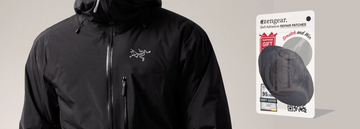Summer Hiking Layering: Stay Comfortable and Protected on Your Outdoor Adventures
by Emily Jannet on Jul 04, 2023
Summer hiking offers breathtaking views, invigorating experiences, and a chance to reconnect with nature. However, it's essential to be prepared and dress appropriately for the elements. In this article, we will explore the art of summer hiking layering, helping you stay comfortable, protected, and ready for any adventure that comes your way.
Understanding the Importance of Layering
Layering is a fundamental concept in outdoor clothing, enabling hikers to adapt to changing weather conditions and maintain optimal body temperature. It involves wearing multiple layers of clothing that work together to provide insulation, moisture management, and protection from the elements.
Base Layer: Wick Away Moisture
The base layer is the foundation of your hiking outfit. It should be made of moisture-wicking materials, such as merino wool or synthetic fabrics like polyester. These fabrics draw sweat away from your skin, keeping you dry and comfortable throughout your hike. Choose a lightweight and breathable base layer that fits snugly without being restrictive.
Mid Layer: Insulate and Regulate Temperature
The mid layer provides insulation and helps regulate your body temperature. Opt for lightweight and breathable materials like fleece or down jackets. These layers trap warm air close to your body while allowing excess heat and moisture to escape. Consider the weather conditions and choose the appropriate thickness for your mid layer.
Outer Layer: Shield from Elements
The outer layer, also known as the shell layer, acts as your shield against wind, rain, and other elements. Look for a waterproof and breathable jacket that can withstand unexpected showers or gusts of wind. Choose a jacket with adjustable features like a hood, cuffs, and hem to seal out the elements effectively.
Accessories: Essential Gear for Summer Hiking
Apart from clothing layers, certain accessories are crucial for a comfortable and safe hiking experience. Don't forget to pack a wide-brimmed hat to protect your face from the sun's rays. Sunglasses with UV protection are essential to shield your eyes from harmful glare. Additionally, invest in a sturdy pair of hiking boots, moisture-wicking socks, and lightweight gloves for added comfort and protection.
Choosing the Right Fabrics for Each Layer
When selecting fabrics for your hiking layers, prioritize moisture-wicking, breathable, and quick-drying materials. Merino wool, polyester, nylon, and blended fabrics are popular choices for outdoor enthusiasts. Avoid cotton as it retains moisture, which can lead to discomfort and even hypothermia in colder temperatures.
Layering Techniques for Different Weather Conditions
Layering techniques vary depending on the weather conditions you expect to encounter during your hike. For mild temperatures, a base layer and a lightweight mid layer may be sufficient. In colder conditions, consider adding an insulating mid layer and a thicker outer shell. Be prepared to adjust your layers throughout the day as the weather changes.
Tips for Effective Layering
- Pay attention to the weather forecast and plan your layers accordingly.
- Avoid overdressing to prevent excessive sweating, which can lead to discomfort.
- Carry extra layers in your backpack for unexpected weather changes.
- Opt for clothing with ventilation options like zippered vents for temperature regulation.
- Experiment with different layering combinations to find what works best for you.
Bottom Line
Mastering the art of summer hiking layering is essential for a comfortable and enjoyable outdoor adventure. By understanding the purpose of each layer, choosing the right fabrics, and following effective layering techniques, you can stay comfortable, protected, and ready to take on the challenges of the trail. So, gear up, embrace the beauty of nature, and make unforgettable memories on your next summer hiking expedition.





